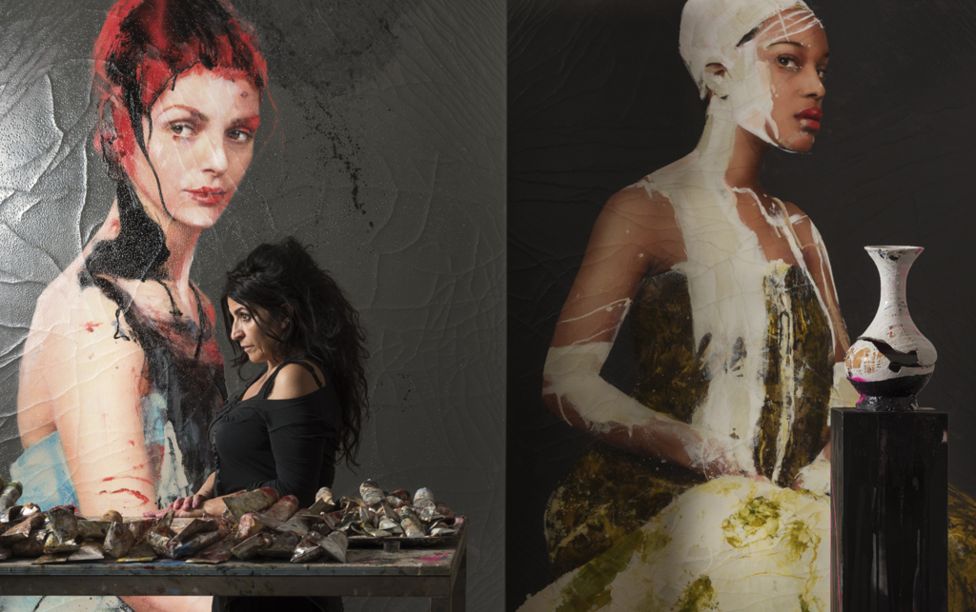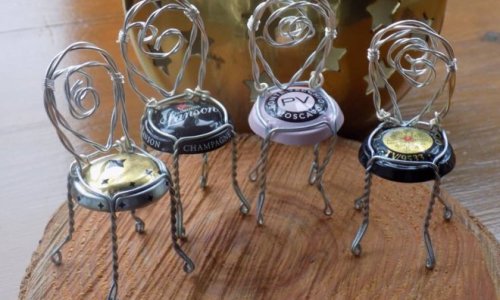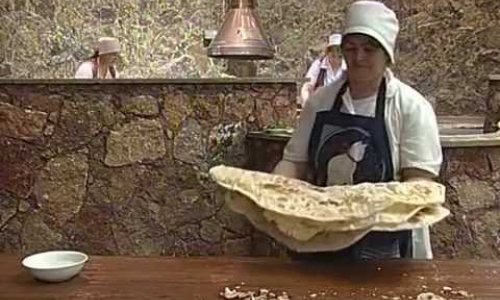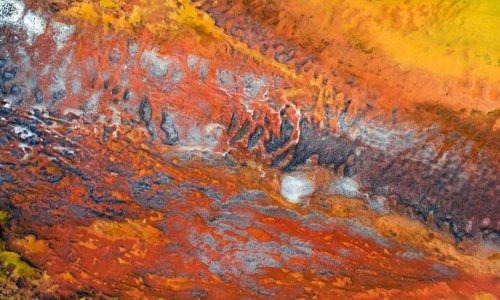Lita Cabellut is one of Spain's most successful artists, but she's barely known in her home country. What's more, the woman whose paintings now sell for six figure sums spent her early years living on the street.
"My childhood was like that of thousands of street kids around the world," says Lita Cabellut. She used to roam the streets of Barcelona with other homeless children and slept in the open air.
"We looked after one another - we did whatever we liked. We took coins out of the fountains, begged Zippo lighters from sailors and stole tourists' wallets. We used to go into restaurants and say our father was in the toilet when they served us, before wolfing down the food and running off."
Cabellut was born in a village in Aragon, north-east Spain, in 1961. While she was a baby, she and her mother moved to Barcelona. Her mother ran a brothel in the city and Cabellut was left with her grandmother - but in reality she spent most of her time out on the streets.
"I ran errands for the prostitutes. They gave me money to buy packs of cigarettes, sandwiches, condoms or jewellery, and I kept the change."
Looking back, she says that "art, of course, was there because art is always around us", but she didn't think about it in a formal sense - she was preoccupied with survival.
"A child never recognizes art as something separated. I sold imaginary stars on the streets. Is that not a true performance of art? But for me it was a way to survive."
She didn't go to school and it never crossed her mind that one day she would become one of Spain's most successful artists.
"My expectations were to be a dancer, to fly, to run, to be stronger than all children around me. The expectation of a child is always the same - poor or rich, we want to be superheroes," she says.
According to the 2014-15 annual report compiled by Artprice, the only living Spaniard who sells more paintings than Cabellut is the Majorcan artist Miquel Barcelo.
Now her vivid portraits can sell for $100,000 (£70,000) or more - actors Hugh Jackman and Halle Berry, as well as chef, Gordon Ramsay, are each reported to own one.
So what changed the course of Cabellut's life so dramatically?
Cabellut's grandmother died when she was about 10 years old and she ended up in a Barcelona orphanage before being adopted by "a beautiful Catalan family" at the age of 12.
She won't reveal much about them, except that they introduced her to art. They took her to Madrid's Prado museum, and introduced a 13-year-old Cabellut to Goya's dark and haunting Pilgrimage to San Isidro, which was painted between 1820 and 1823. "I recognised in this painting the expressions in the eyes of the people that I crossed in the streets when I was little," she says.
"This painting describes the madness, the hope, the terrific moments that the human being can have when you lose your security. For me, when I saw this painting for the first time I felt the complicity of being a witness."
It made such an impression on her that she tried to copy another Goya, one of his sweeter works depicting a country boy with a country girl and a little dog. The result was not spectacular but her adopted family encouraged the adolescent Cabellut to keep painting - they even paid for private tutors to make up for lost time.
And for the first time in her life, she also started going to school. "It was very difficult for me at school as I was so far behind. It's hard to start learning to read and write when you are 13, and then there's the psychological difficulty of being put into a class where all the children are much younger. I had a lot of private classes at home. It was necessary because I had to learn everything."
She slowly made progress at school, started to listen to the "voice of art" and decided to study art at Amsterdam's Gerrit Rietveld Academy.
"At that time it was hard to get into this school. They had a good reputation in the 80s and that was part of my giant ambitions. Again, I wanted to be a superhero. I had passion, dedication, you can call it delirium - a tremendous hunger."
The "three big masters" who influenced her the most were Spain's Goya, the early Florentine Renaissance sculptor Donatello, and German composer Bach. After graduating, she stayed in the Netherlands and now she has a studio in The Hague, but success didn't come easily.
"I did things like giving someone a painting so they would pay my electricity bill and painting a house to get three months' credit in a supermarket.
"When you are in a growth period as an artist you have to defend it ferociously because you need that time to find your language and become a maestro. If you swap that time for money, you don't get that time back to develop yourself."
At one point, having established a lucrative relationship with a reputable gallery, she decided to start all over again, and didn't sell anything for two years.
"I had painted a shocking series on child prostitution and my gallerist said: 'No, Lita, you can't do this. People don't want this. Paint more angels, those angels that sell so well.' I said 'No' and I lost my gallery.
"An artist has to follow their trajectory. So today that might be angels, tomorrow demons and ghosts. If you don't follow your artistic development, it just becomes an economic development, and that is very dangerous."
Today, Cabellut is best known for her portraits, which include paintings of famous people such as Coco Chanel and Charlie Chaplin, but also anonymous subjects who some might consider ugly.
"I do not see ugly people," says Cabellut. "I paint different people. I paint people in whom you need to find the real beauty behind the skin. I have a weakness for underdogs, and one part of me will always stay with them. What drives me is the portrait of the human being, of you, of me, of us."
She puts her canvases through a lengthy chemical process to give them a rough and edgy texture and uses techniques that range from "17th-Century studio painting to street art".
Some of her larger portraits are two metres high - and for a couple of years she had to be suspended from ropes to reach the top of them. She couldn't stretch after she was involved in an accident in Paris - she was knocked over and injured by a police officer who was chasing a thief.
Although Cabellut has held solo exhibitions in London, Dubai and Seoul, she has yet to gain public recognition in her native Spain. Two shows in 2017 are aimed at remedying this: a retrospective at Barcelona's Antonio Vila Casas foundation, and an exhibition at A Coruna's contemporary art museum where her studio will be recreated.
"Of course, my roots are Spanish and I will always be Spanish. It is beautiful that the people from your home count on you and kiss you."
As for her birth mother, Cabellut says she has forgiven her for abandoning her. She recalls once visiting her when the painter was a student but found it impossible to tell her how she felt.
And when she talks about her work, she refers back to her childhood on the streets of Barcelona. "I still feel like I am selling stars," she says." People are not buying just paint, canvas and resin - it's the magic and emotion that is the spirit of art."
(BBC)






www.ann.az
Follow us !











